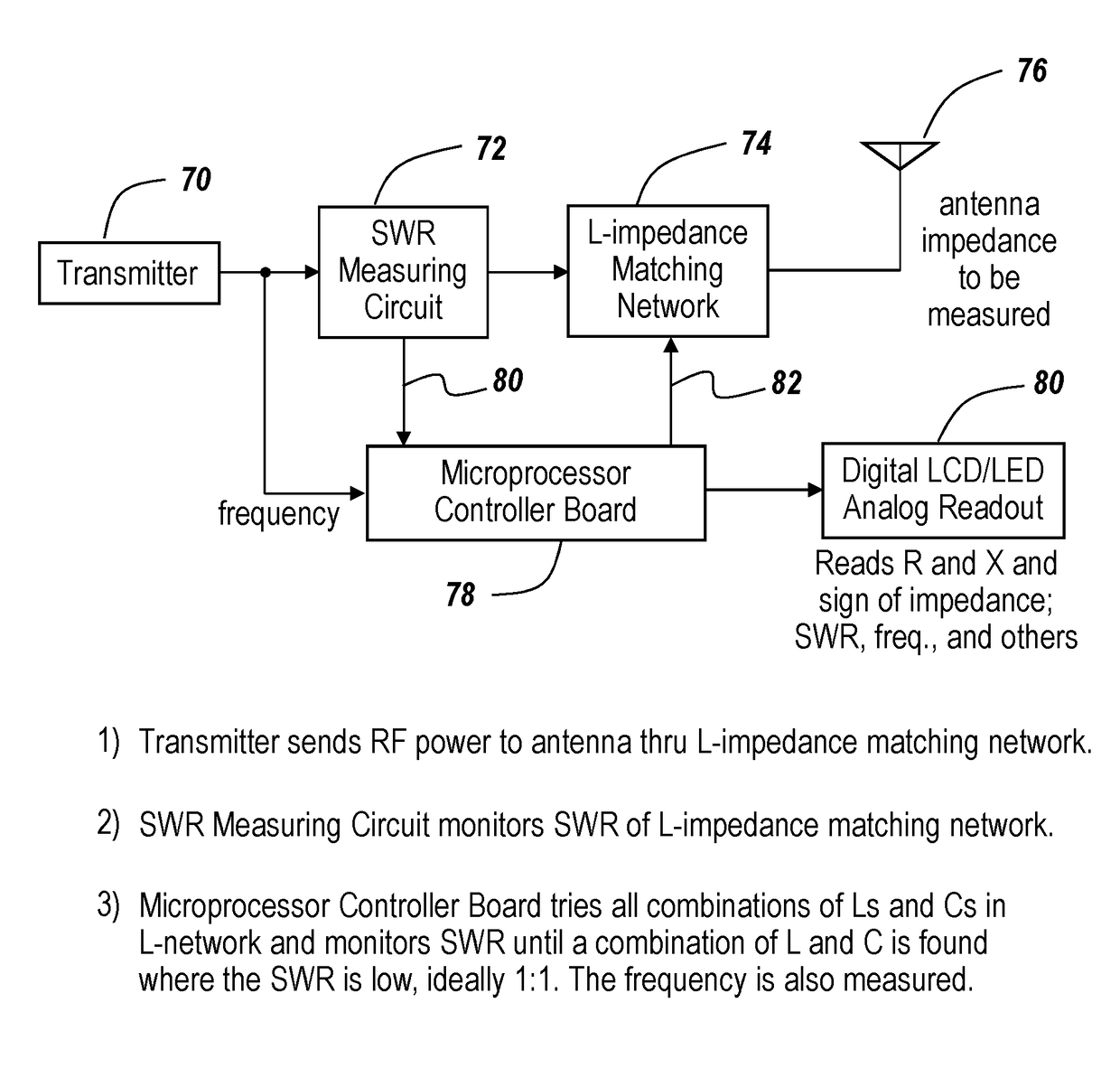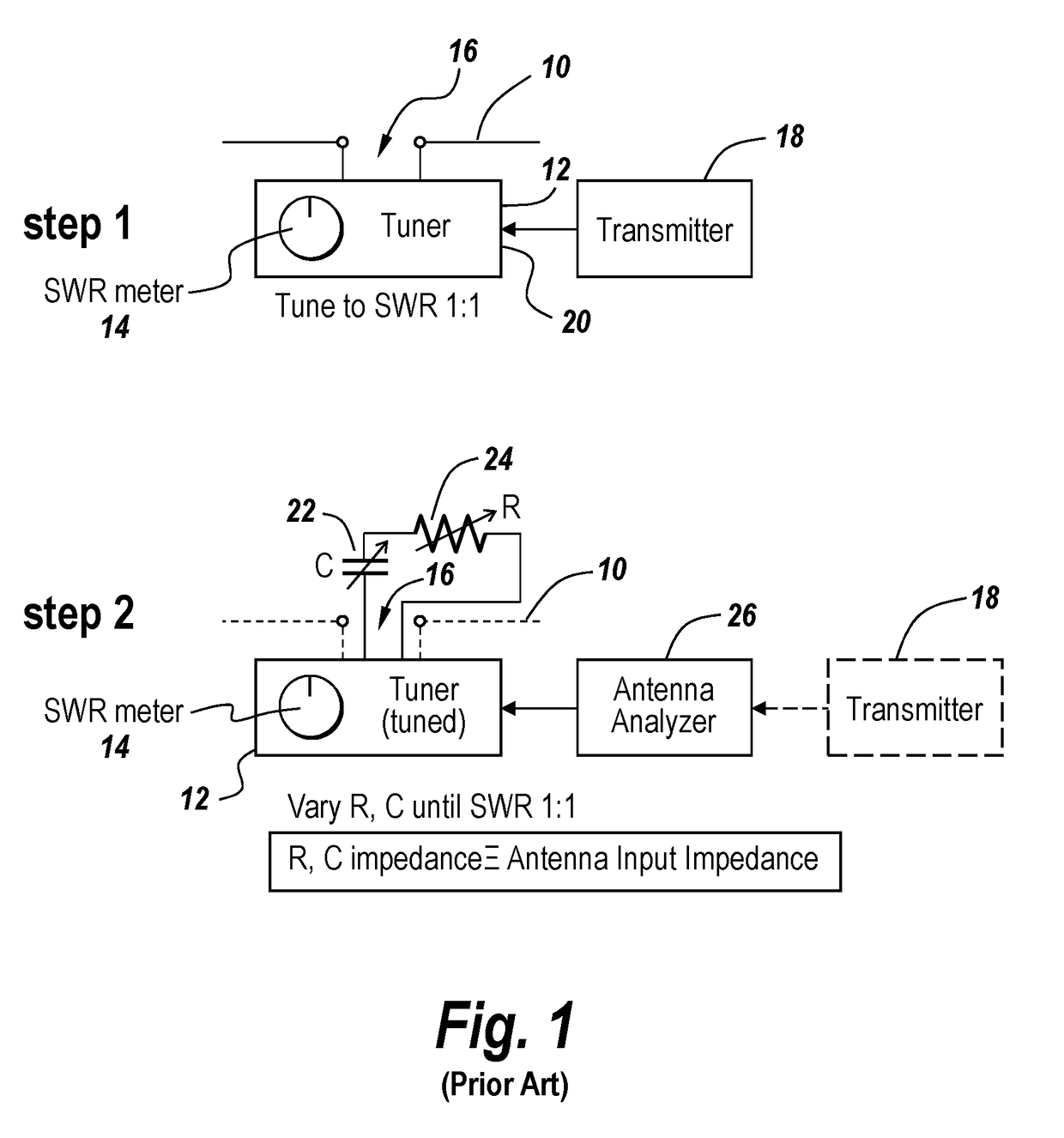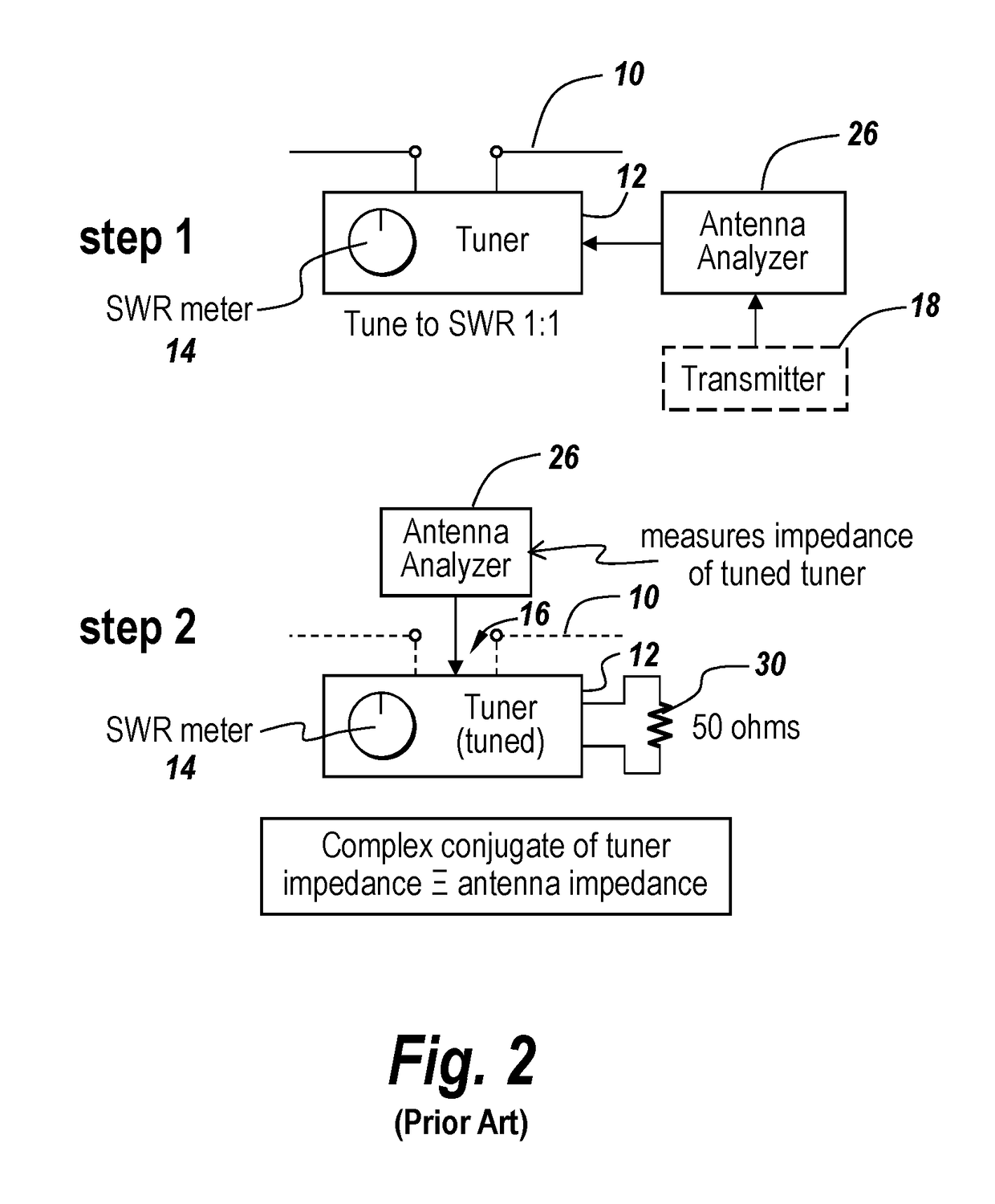Method and apparatus for remotely determining antenna input impedance
a technology of remote sensing and antenna input, which is applied in the direction of antenna radiation diagram, transmission monitoring, receiver monitoring, etc., can solve the problems of antenna loss of efficiency, affecting antenna impedance, and varying from its design parameters
- Summary
- Abstract
- Description
- Claims
- Application Information
AI Technical Summary
Benefits of technology
Problems solved by technology
Method used
Image
Examples
Embodiment Construction
[0033]Referring now to FIG. 1, in the prior art, in order to obtain the antenna input impedance at the feed point of an antenna which is remote from the tuner, in Step 1 of this process, antenna 10 is coupled to a tuner 12 which has an SWR meter 14 indicating the SWR measured at the tuner. Antenna 10 is coupled to tuner 12 at antenna input terminals 16, with a transmitter 18 coupled to the transmitter input 20 of tuner 12.
[0034]In Step 2 of this prior art process, antenna 10 is disconnected from the antenna input terminal 16 of tuner 12 and a series RC and / or an RL circuit having a variable capacitor 22 and / or a variable inductor (not shown) and a variable resistor 24 is connected in series across the antenna input terminals 16 of tuner 12. At the same time, transmitter 18 is disconnected from tuner 12 and an antenna analyzer 26 is connected to the transmitter input terminals of tuner 12.
[0035]The capacitive element 22 and / or inductive element (not shown) and resistive element 24 ar...
PUM
 Login to View More
Login to View More Abstract
Description
Claims
Application Information
 Login to View More
Login to View More - R&D
- Intellectual Property
- Life Sciences
- Materials
- Tech Scout
- Unparalleled Data Quality
- Higher Quality Content
- 60% Fewer Hallucinations
Browse by: Latest US Patents, China's latest patents, Technical Efficacy Thesaurus, Application Domain, Technology Topic, Popular Technical Reports.
© 2025 PatSnap. All rights reserved.Legal|Privacy policy|Modern Slavery Act Transparency Statement|Sitemap|About US| Contact US: help@patsnap.com



